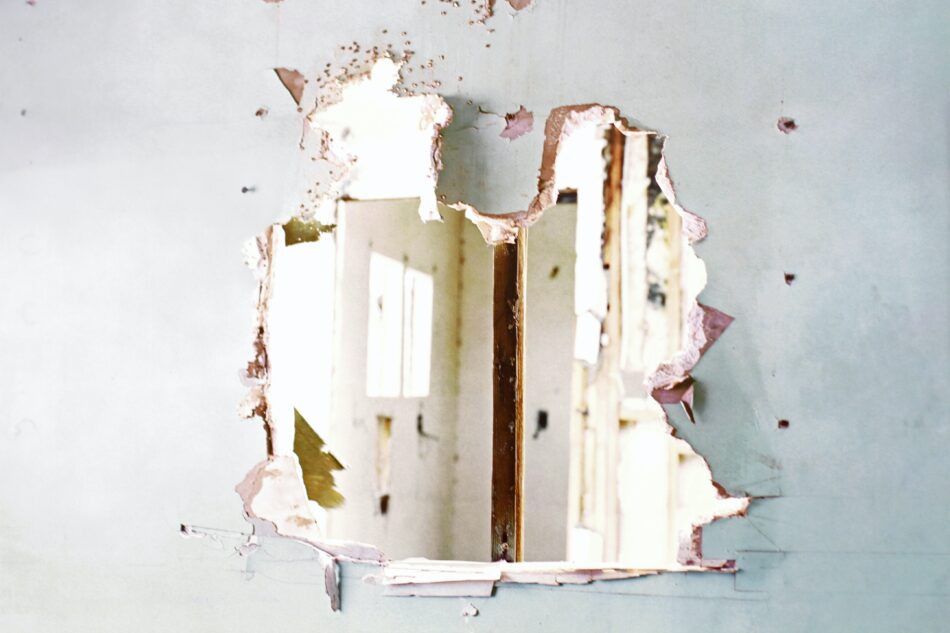Prepare Your Business for New Food Waste Legislation in the UK
From 31 March 2025, most UK businesses must arrange separate food waste collections. Learn and prepare for the new food waste legislation in the UK.

Plasterboard is a material used to make many interior walls and ceilings in the UK, one of the most widespread construction materials in our homes. It provides fire protection, insulation, and helps control condensation in your walls. During renovations you’ll need to arrange safe and effective plasterboard disposal.
Homeowners looking to remodel, builders stripping properties, and deconstruction teams may all find themselves disposing of plasterboard at some point. There are legal regulations in place, as well as environmental concerns about the disposal of plasterboard, so removing it properly is vital. Learn how to get rid of plasterboard from your home or business safely.
The first plant to manufacture plasterboard in the UK opened in 1888. Sackett Board, the first model of plasterboard, was invented by Augustine Sackett and Fred Kane in 1894. It was later developed into gypsum board more than thirty years later.
This was adopted by a US corporation that later introduced Sheetrock. The patent for plasterboard was traded over through the decades and given many different names. It was adapted each time for efficiency and to provide a quicker alternative to lath and plaster.
Plasterboard is a type of panel commonly used in wall construction, also known as drywall. It’s made of gypsum (calcium sulphate dihydrate) that’s processed or pressed into a board and has a paper covering added.
The gypsum used to create plasterboard can be either natural or synthetic. Naturally, gypsum is derived from rock mined in Lincolnshire, Yorkshire, and Sussex. It’s made of calcium sulphate and water. Synthetically, it’s a by-product of industrial processes –commonly, flue-gas desulphurisation of power station emissions.
No, plasterboard is actually a type of non-hazardous waste. However, plasterboard is banned from landfill in the UK even though it’s not a type of hazardous waste. This is because the gypsum it contains may produce hydrogen sulphide (which is toxic) when it gets wet or mixes with biodegradables like food waste.
Yes, recycling plasterboard is the best solution in most cases. The gypsum plasterboard contains can be recovered and recycled, often used to create new plasterboard. This prevents waste plasterboard going to non-hazardous landfill cells separate from biodegradable waste, and reduces the energy required to extract new gypsum.
Plasterboard recycling solutions are available for both full and broken boards – by the sheet or the bag. So don’t worry if you’ve removed plasterboard from a building and it’s not intact – you can still recycle it.
The disposal of plasterboard in the UK must be done in line with relevant regulations. The Environment Agency passed legislation in 2009 that means plasterboard cannot be land-filled and must be separated for recycling and recovery. This applies to both individuals and businesses and means you cannot throw it away with your general waste.
To dispose of plasterboard, you should first check with your local household waste recycling centre to see if they offer plasterboard disposal and recycling. Many do and accept it by the sheet or bag. Otherwise, you can hire a skip when disposing of plasterboard in large amounts or use a licensed waste disposal company to collect smaller amounts.
For businesses, incorrect disposal of plasterboard could result in hefty fines. You must arrange commercial waste collection by a licensed waste carrier to remove plasterboard from your premises. Contact us at Business Waste today to learn how we can help you dispose of plasterboard.
To store waste plasterboard with no need for an environmental permit before it’s recovered, you must comply with a few conditions in line with the UK government regulations. These are that you:
While plasterboard may not be hazardous alone, if it becomes wet or mixes with biodegradable waste such as sewage, manure, and food waste, it can start to putrefy. The putrefaction process releases hydrogen sulphide, which is toxic and can cause respiratory complications. This means it then classes as hazardous waste.
At best, it can produce an irritating rotten egg smell. At worst, it can cause nausea, headaches, sleep loss, tearing of the eyes, and airway problems for asthmatics. Therefore, safe disposal of plasterboard separate from biodegradable waste is essential to protect human and environmental health.
Many people and construction firms in the UK are turning to plasterboard alternatives. These can bring life to a dull room, while being easier and safer to dispose of and recycle. A few alternatives to plasterboard include:
A few facts about plasterboard are that:
Normally, you can take your plasterboard to your local household recycling and waste centre to get rid of it for free. Check in advance to ensure they accept plasterboard for disposal and recycling though, as not all do. Most centres will take your plasterboard for free though some businesses may be required to pay a small fee.
Find out more about other rubbish streams.
Get a fast FREE quote for your plasterboard waste
From 31 March 2025, most UK businesses must arrange separate food waste collections. Learn and prepare for the new food waste legislation in the UK.
The study participants included business owners and company employees, revealing unexpected findings about corporate environmental practices.